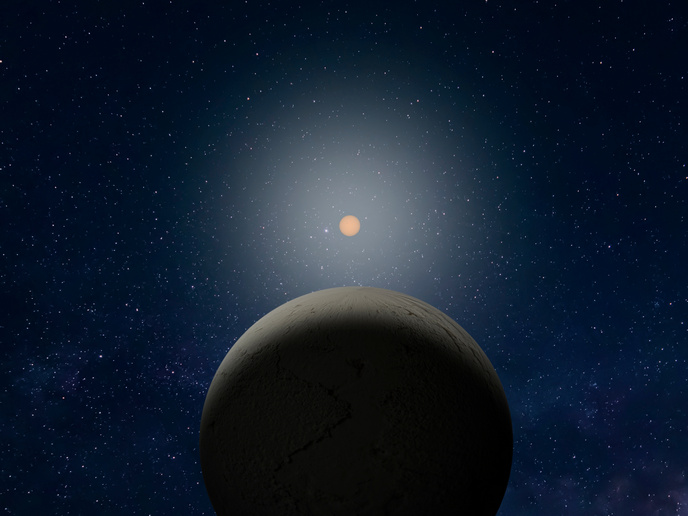Earth-sized planet spotted around nearby long-lived dwarf
Research supported by the EU-funded SPECULOOS and BEBOP projects has revealed SPECULOOS 3, a dwarf star slightly larger than Jupiter. It is the second planetary system to be discovered after the famous TRAPPIST-1 and its seven planets.
Endless daytime or endless night
As described in the study published in ‘Nature Astronomy’, the newly discovered exoplanet SPECULOOS-3 b is around 55 light years away from Earth – a rather short distance considering that the Milky Way stretches around 100 000 light years across. “SPECULOOS-3 b is practically the same size as our planet,” states study lead author Dr Michaël Gillon of SPECULOOS project coordinator Université de Liège (ULiège), Belgium, in a news item posted on the project website. “A year, i.e. an orbit around the star, lasts around 17 hours. Days and nights, on the other hand, should never end. We believe that the planet rotates synchronously, so that the same side, called the day side, always faces the star, just like the Moon does for the Earth. On the other hand, the night side hand, would be locked in endless darkness.” Ultra-cool dwarf stars are the universe’s least massive stars and a hundred times less luminous than the Sun. However, they live a hundred times longer and will likely be the last stars burning in the universe. “We designed SPECULOOS specifically to observe nearby ultra-cool dwarf stars in search of rocky planets that lend themselves well to detailed studies,” remarks study co-author Dr Laetitia Delrez, also of ULiège. “In 2017, our SPECULOOS prototype using the TRAPPIST telescope discovered the famous TRAPPIST-1 system made up of seven Earth-sized planets, including several potentially habitable ones. This was an excellent start!”
Where there is no atmosphere
The SPECULOOS-3 b planet has an extremely short orbit, resulting in it being bombarded with 16 times more energy per second from its dwarf star than our planet receives from the Sun. “In such an environment, the presence of an atmosphere around the planet is highly unlikely,” notes study co-author Dr Julien de Wit, ULiège alumnus, Massachusetts Institute of Technology (MIT) professor, and co-director of the SPECULOOS Northern Observatory and its Artemis telescope, co-developed by ULiège and MIT. “The fact that this planet has no atmosphere could be a plus in several respects. For example, it could enable us to learn a great deal about ultra-cool dwarf stars, which in turn will make possible more in-depth studies of their potentially habitable planets.” SPECULOOS-3 b is an excellent prospect for further observations using the James Webb Space Telescope. It could lead to valuable information on the planet’s mineralogy and also yield data that could provide greater insight into our universe. The SPECULOOS (SPECULOOS: searching for habitable planets amenable for biosignatures detection around the nearest ultra-cool stars) project ended in 2019. BEBOP (Binaries Escorted By Orbiting Planets) ends in October 2024. For more information, please see: SPECULOOS project website BEBOP project
Keywords
SPECULOOS, BEBOP, exoplanet, planet, star, dwarf star, ultra-cool dwarf star, SPECULOOS 3, SPECULOOS-3 b



